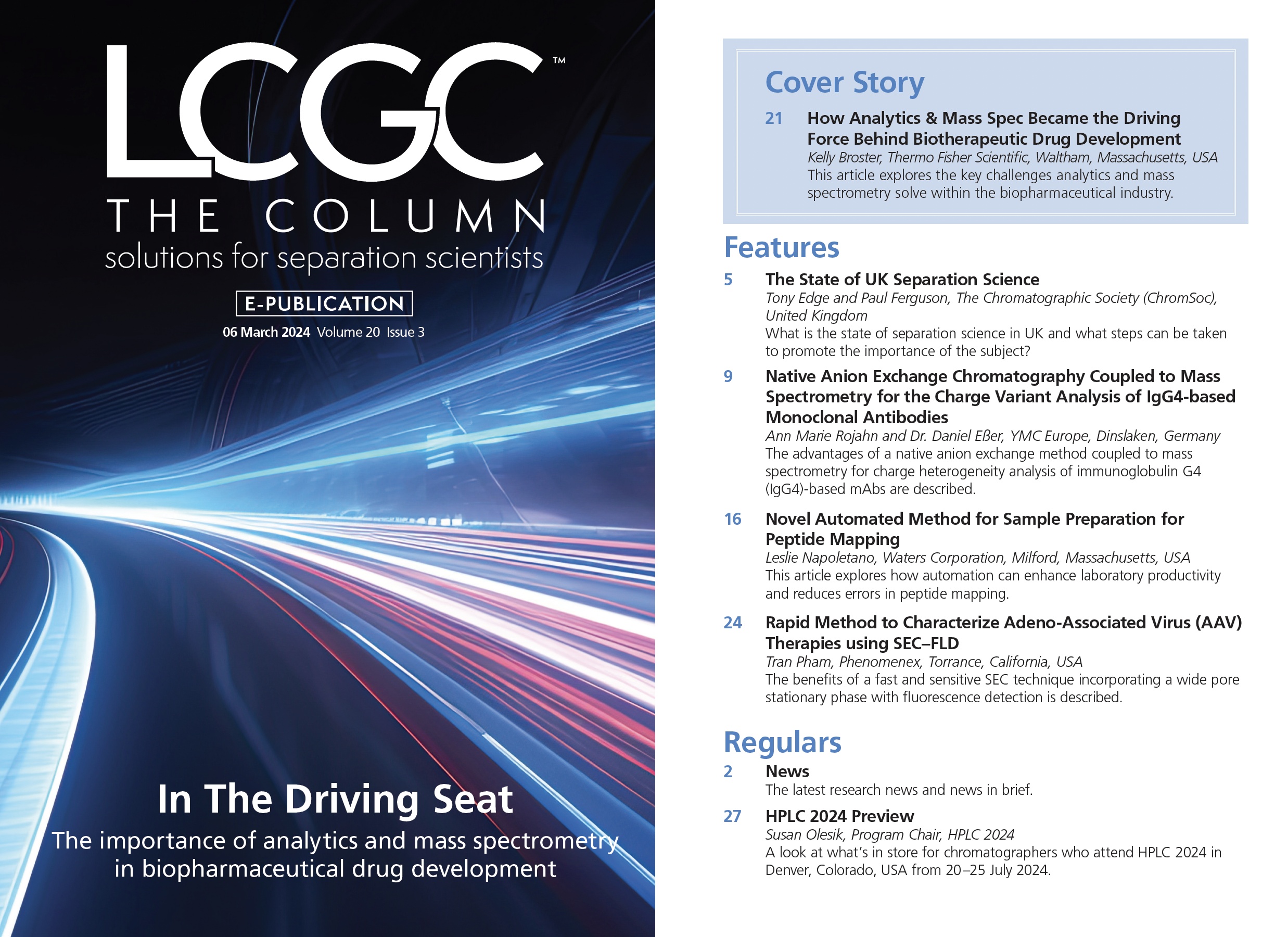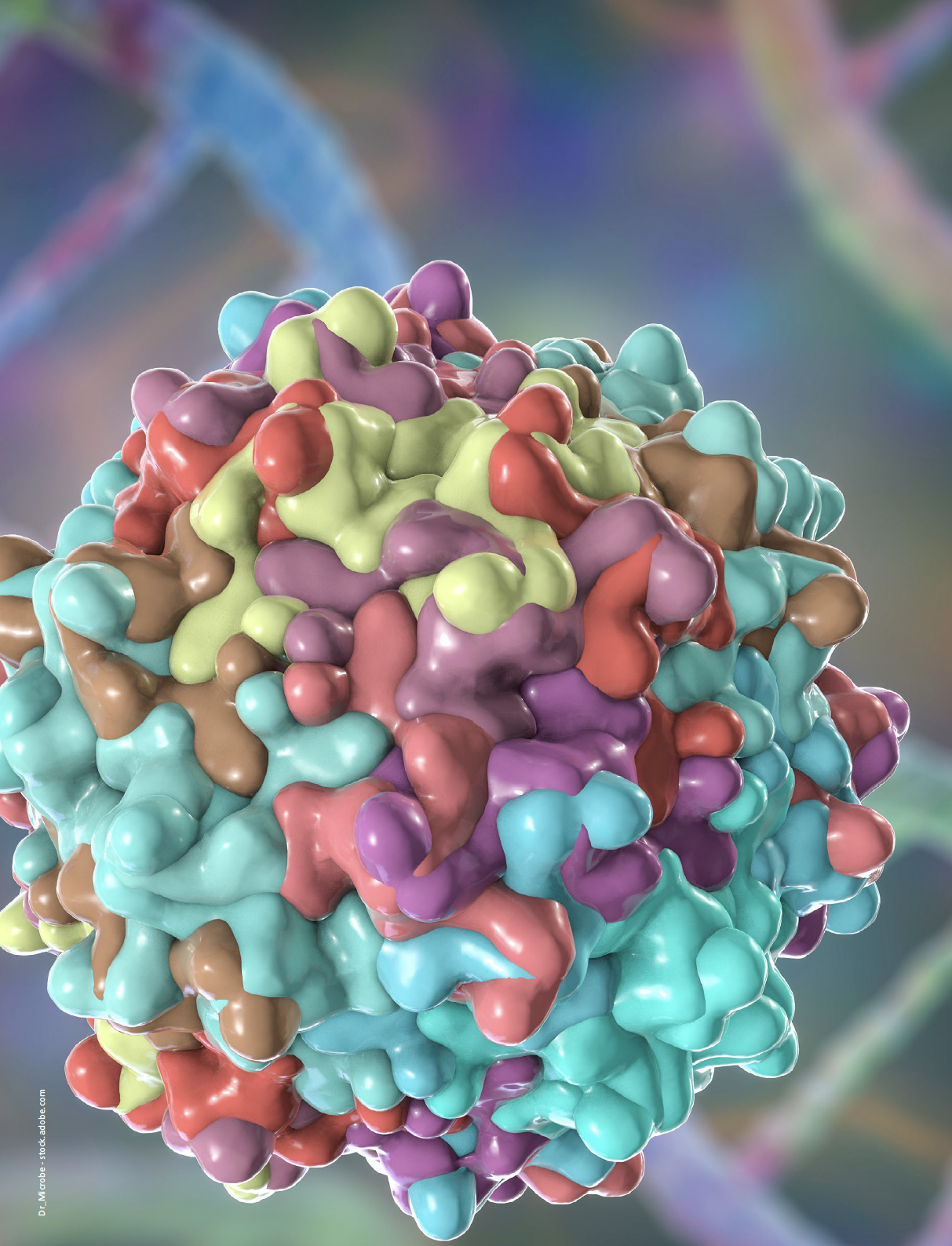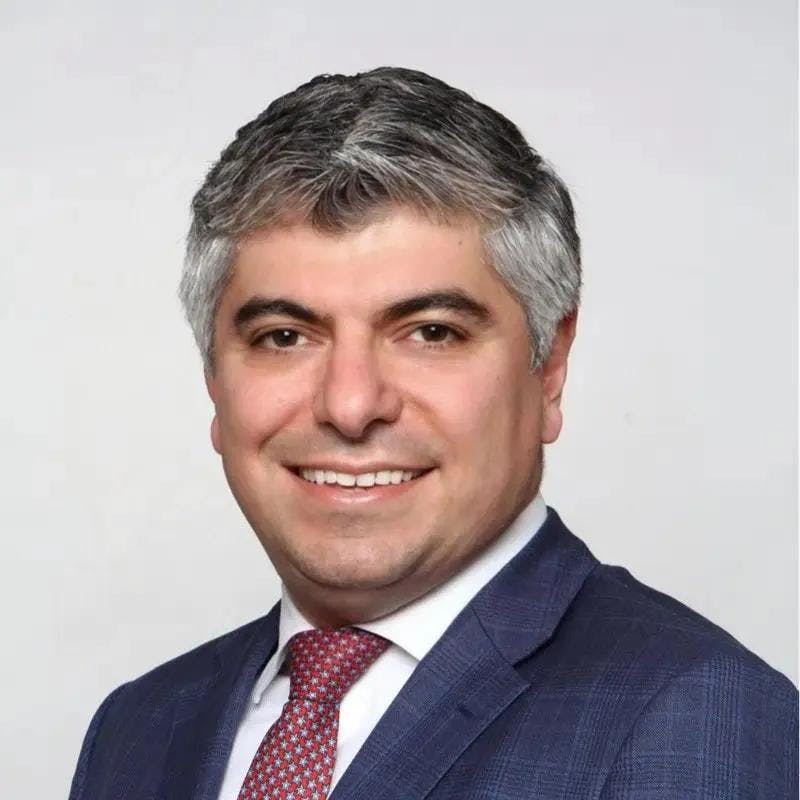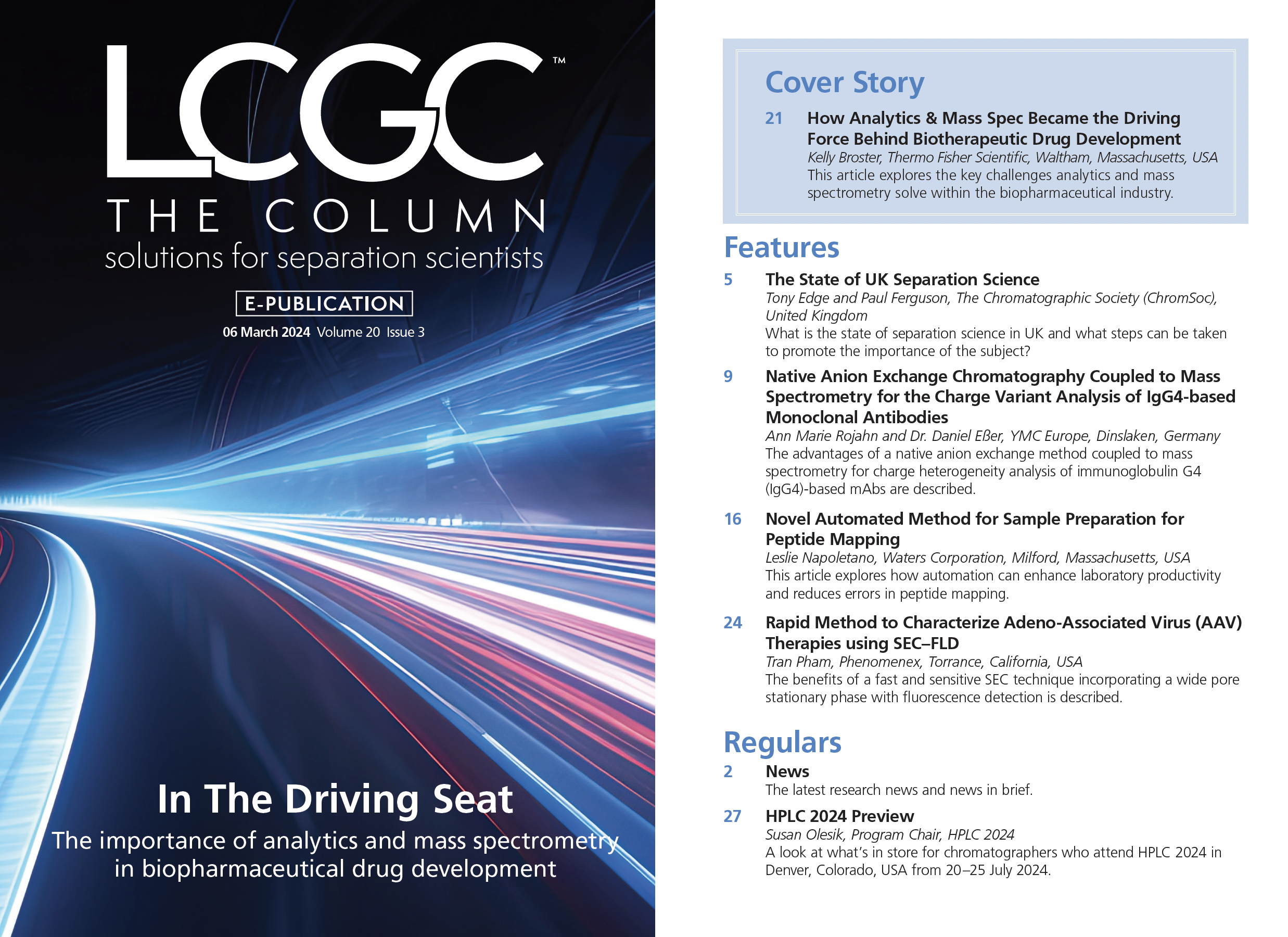The State of UK Separation Science
The scientific community relies heavily on the analytical sciences to support new ideas and theories, with separation science being a key component. However, the UK has seen a steady decline in this scientific discipline relative to other parts of the globe. To address this, the learned communities came together to discuss the current state of the nation and to initiate a plan to address this.
Chromatography in the UK began in earnest in the 1950s and saw the development of the theory for partition chromatography by Martin and Synge, who were both awarded Nobel Prizes for their contributions to chemistry in 1952. Since then, the UK has seen significant contributions to the development of the theory and practice of chromatography from homegrown world leaders.
Separation science in the UK has seen some incredible times and some incredible practitioners. It delivers a large component of measurement science in the UK, and has grown from a technique that was only used in one or two industries to one that is used very widely. However, the UK is no longer recognised as an innovative research leader on the global separation science stage, which inevitably impacts research-led teaching, which in turn impacts industry being able to recruit suitably qualified candidates. The list of pure chromatographers from the UK today is not so extensive and filled with many grey hairs. There is healthy research in many areas that use chromatography; however, without the practice of good chromatography, these other disciplines will struggle to develop effectively. To address this, the Community for Analytical Measurement Scientists (CAMS-UK), the Royal Society of Chemistry (RSC) Separation Science Group (SSG), and The Chromatographic Society (ChromSoc) came together and organised a meeting to identify where separation science is currently in the UK, and to understand what the future needs of industry and academia may be. The first half of the meeting looked at the state of separation science in research, teaching, and in industry and the second half looked to answer three key questions:
- What does industry need in terms of (a) type and depth of separation science skills from graduate and postgraduate recruits, and (b) separation science technology innovation to help it deliver on future ambitions and remain competitive?
- Where could UK Research and Innovation (UKRI) investment in separation science have the most significant impact in the next 10 years with respect to societal challenges and strategic priorities?
- If UKRI were to fund research and innovation in separation sciences, which approaches would be the most impactful and accessible for the community to engage and co-invest in?
The one day event was kicked off by Melissa Hanna-Brown, chair of the executive board for CAMS-UK.
Session One: Setting the Scene
John Langley of the University of Southampton and the RSC SSG was the first speaker and asked the audience if there is a problem, and why should we be looking for a solution now? He stated that the community needed to understand how separation scientists ended up in their current situation, and determine if there is time left to initiate change. He said there was also a need for better collaboration and networking, as well as a need for consistent regulations and standards to govern the use of separation science.
Langley also stated that there was a need to better understand and adopt sustainability and green chemistry, giving the example of sub-2 μm particles and supercritical fluid chromatography (SFC) as ways that chromatographers have had an impact, albeit not by design. He stressed that it was important to understand where UK separation science fits into the general landscape in the UK, and to also look at other countries to see what has happened there. Langley then summarised his presentation stating that it was necessary to identify what the destination is for this journey, and also to identify who to target so that the maximum return could be sought.
Session Two: Do We Still Need Separation Science in the UK?
The next presenter was Paul Ferguson of AstraZeneca and ChromSoc, who initially posed the provocative question “Are separation science specialists relevant in today’s analytical landscape?” He asked a series of questions to the audience regarding the relevancy of separation science in industry and academia and if the technology could be simply outsourced. Ferguson finished by saying that in his experience, it was very difficult to recruit separation scientists with the appropriate level of experience, that there is an ever-increasing need for separation scientists in the UK, and that industry also had to play a role in terms of the retention of separation scientists, ensuring that better career paths were developed.
Session Three: Where Are the Needs in the Future?
The next presentation was delivered by Melissa Hanna-Brown of Pfizer and CAMS-UK, who focused on three main future needs: speed, resolution and, increasingly, an environmental focus. She spoke about the general drive to increase the level of automation, portability and miniaturization within the laboratory, with focuses on sample preparation and increased use of predictive approaches to bring efficiencies to all aspects of assay development. The requirement for an enhanced selectivity space with respect to stationary phase chemistry and more innovation with novel materials including tunable phases was also addressed. In summing up, Hanna-Brown spoke about the increasing body of work in the literature on assessing ‘greenness’ of methods and guidance for developing green sample prep and separation methods.
Session Four: Separation Science in the UK Academic System
The next presentation was delivered by Andrew Pitt of the University of Manchester and focussed on separation science in UK academia. Pitt started the presentation off by giving anecdotal evidence that teaching and research funding was limited in universities. He gave evidence that there was no depth in the chromatography that is taught, using a figure of 12 h (maximum) and 3 h (average) for a three-year degree course, but suggested that the ubiquitous nature of chromatography in industry would lead it to be taught in a wider range of subject areas such as physics, engineering and materials science. The greater breadth of departments would also help to ensure that consistency across the topics was also maintained. Pitt also stated that the practical use of chromatography was very limited and there tended to be a focus on the output related to the sample, and not to the actual quality of the chromatogram. From the teaching, Pitt moved onto the levels of funding for analytical science from UKRI. The data showed that separation science was not a key component in any recent research funding, and even the strategic plan for analytical science only had one mention of the technique. However, it has since been determined that separation science is a critical skill set that is in decline in UK research.
Session Five: Recruiting Separation Science in the UK
Simon England from recruitment company VRS spoke, stating that recruiting separation scientists at a graduate level was the easiest as there were plenty of roles to fill, but as more experience is required, it gets harder to recruit. In general, separation scientists earn less money than other chemists, with the example of entrance-level computational scientists who earn more than graduate chemists starting roles. Brexit was another challenge since barriers, specifically visas, have been put in place restricting movement from Europe, although England did note that industrial placement and hands-on research projects added a lot to the attractiveness of a graduate candidate for a separation scientist role—however, there were not enough of these being offered.
Session Six: Reflection on Separation Science in the Netherlands and the Formation of TI-COAST
The initial set of presenters highlighted some of the challenges and possible solutions, however the last two speakers came from environments where these challenges had been successfully addressed, and they offered some suggestions as to possible ways forward.
The first speaker was Peter Schoenmakers of the University of Amsterdam, The Netherlands, one of the foremost academic separation scientists in the world, who delivered a presentation on his reflection on separation science in the Netherlands and the formation of the Top Institute for Comprehensive Analytical Science and Technology (TI-COAST), the body on which CAMS-UK was modelled. Schoenmakers started his presentation by stating that the Netherlands was small, with many of the separation science research groups concentrated in Amsterdam. He then went on to describe TI-COAST and funding mechanisms in The Netherlands. Schoenmakers did state that getting funding for pure fundamental research is difficult; however, projects would normally be performed in such a way as to ensure that some fundamental research was undertaken as part of the project.
In terms of teaching, in Schoenmakers’ opinion 12 h was not enough to teach separation science, and at Amsterdam they do typically 70 h. He suggested that universities should advertise the number and types of jobs in industries to encourage more students to take up chromatography. In terms of access to instrumentation, he said the administrators were more expensive than the instrumentation, and that he focussed on the knowledge that is not available in Google. Schoenmakers also said it was important that separation scientists stop being so modest, and be more vocal about their impact and contribution to advancement in other scientific areas.
Session Seven: Separation Science in Belgium
The final presenter of the first session was Deirdre Cabooter of the University of Leuven, Belgium. The first aspect that she approached was the dispersion of universities around the Flanders region of Belgium. She then went through the universities and stated that all of these universities are very close to each other, as well as having a range of large organisations including Janssen, Pfizer, Organon, P&G, MSD, GSK and UCB in close proximity. In fact, all of these organisations are within a 50 km radius. This helps the establishment of collaborations and setting up industrial placements, and also ensures that postgraduates find very well paid jobs easily, whilst supporting local industries.
Cabooter reviewed research funding mechanisms which were not so different from the UK, but it was evident that Belgium had greater success in accessing funding for the separation science, along with the potential access to EU Horizon funding as well.
Conclusions
The morning session highlighted the many challenges that separation scientists face, as well as the consequences of these challenges to industry and academia. There was time spent analysing what was not working, but substantially more time and effort was spent identifying possible solutions, and ultimately what separation science could do to better the UK economy. This included highlighting the potential for better networking, improved and more dedicated training, and also application-driven research and development to support the new challenges that are being set in the many application areas in which chromatography is used.
The organisers are planing to assemble the feedback from the participants on the day with a view to preparing a ‘White Paper’ outlining the situation for this key scientific discipline in the UK. This paper will be shared with UKRI as the first step in highlighting the importance of separation science to UK industry, and outline opportunities to address the current malaise.
Tony Edge is President of The Chromatographic Society (ChromSoc). Paul Ferguson is Honorary Secretary of ChromSoc. Email: enquiries@chromsoc.com
















